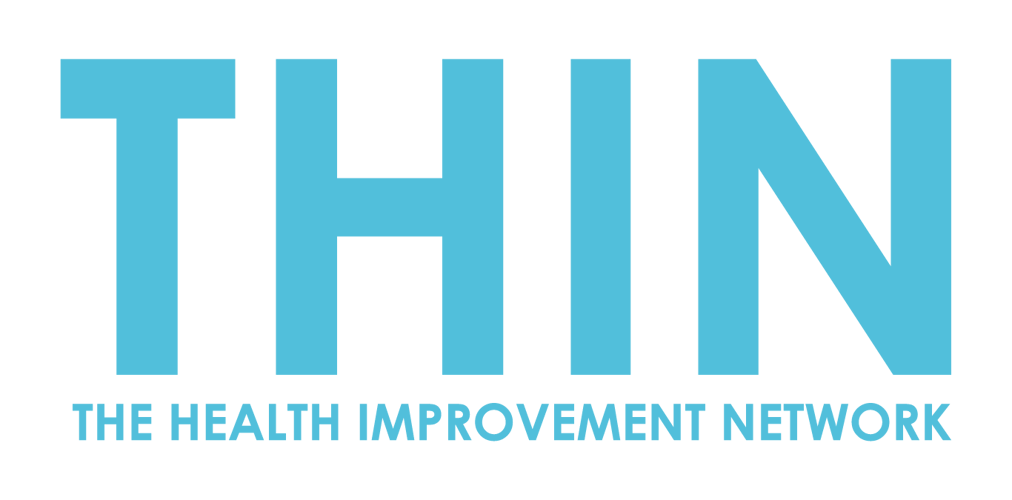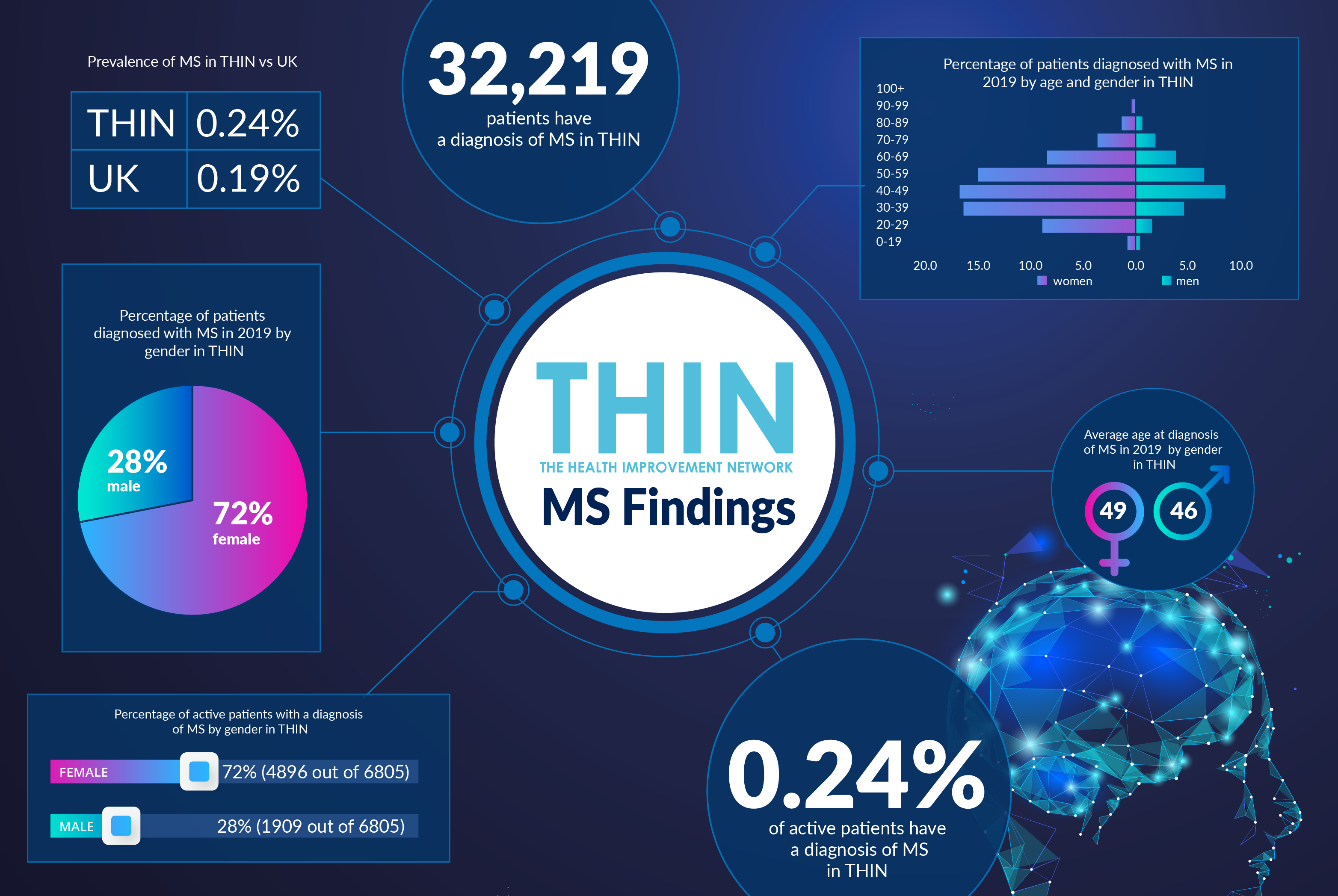Improving Diagnosis of Chronic Kidney Disease
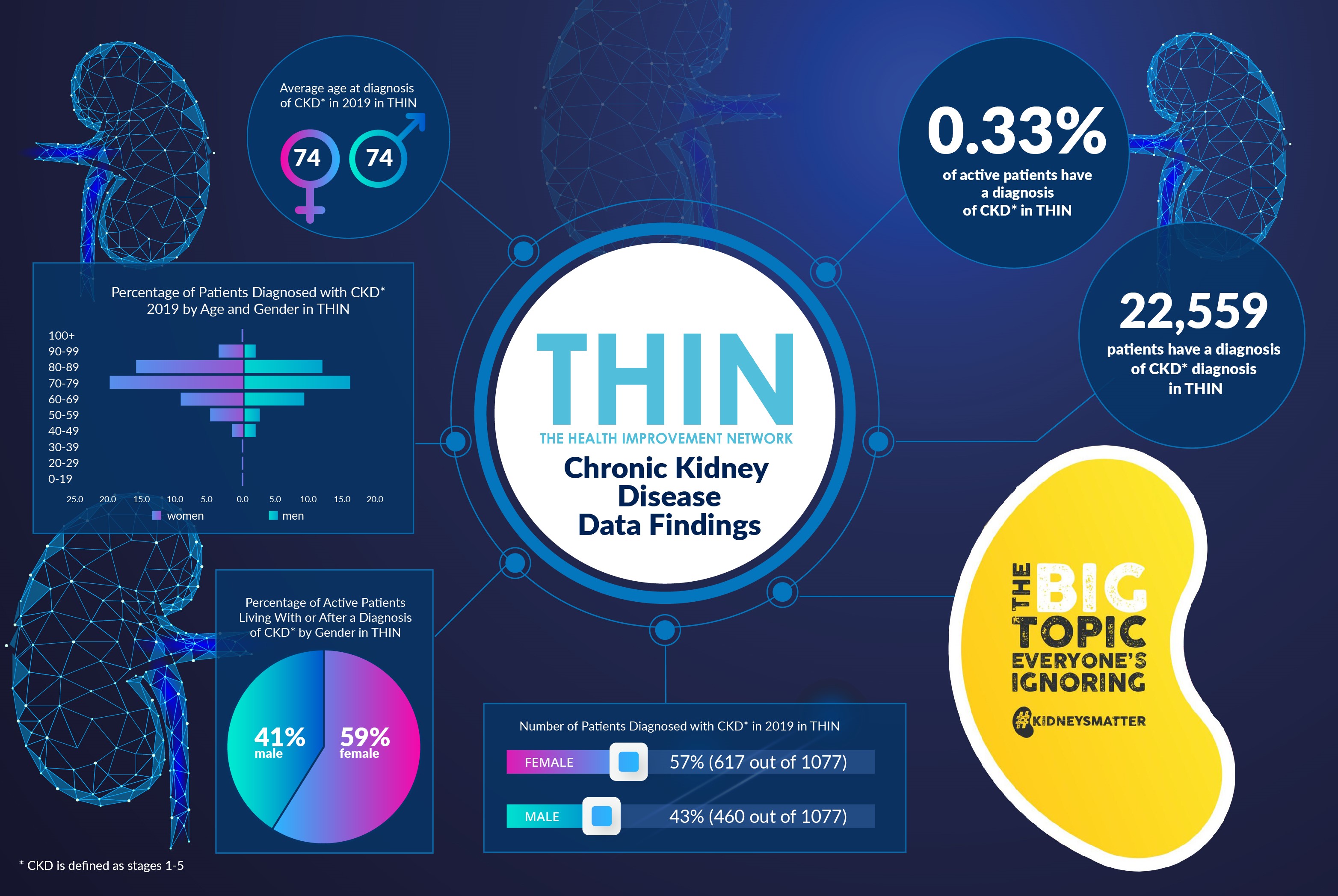
The cost of hidden, undiagnosed disease is widely recognised and is the focus of this year’s World Kidney Day. It is estimated that while three million people in the UK are affected by chronic kidney disease (CKD), up to one million may be undiagnosed.
CKD is under-recognised despite its negative impact on morbidity and mortality and huge societal costs. The risk factors are widely recognised, with uncontrolled diabetes or high blood pressure the biggest causes of kidney failure. However, there are a number of other factors that need to be taken into account – not least the higher incidence of CKD amongst women.
In the US, figures from the Centers for Disease Control point to 18% of women as opposed to 13% of men being diagnosed with CKD. Studies also indicate significant differences in gender related hospital admissions for those on dialysis – with 2.08 admissions per year for women, versus 1.68 per year for men. Young women are also at higher risk of hospital admission than men the same age.
Our analysis of The Health Improvement Network (THIN®), A Cegedim Database, has confirmed this gender difference: 57% of the patients diagnosed with CKD (Stages 1 – 5) in 2019 in THIN are female.
Focus on Early Diagnosis
Early diagnosis and treatment, as well as changes to diet and lifestyle, are vital and can often help slow down or prevent any further damage.
- Diabetes Control
Our THIN analysis also confirmed the significance of diabetes: 29% of active patients with a diagnosis of CKD, also have diabetes. It is recognised that if kidney disease is diagnosed early in people with diabetes, appropriate treatment can be given and its effects can be closely monitored.
Our analysis assessed a perception that diabetes patients are not routinely receiving the Urine albumin to creatinine ratio (UACR) test required to identify kidney disease that can occur as a complication of diabetes. The test should be conducted every year, as it can provide a ‘window of opportunity’ where the rate of kidney damage can be slowed or even halted with the right treatment and lifestyle changes. A recent survey identified that over half (54%) of GPs and nurses who treat Type II diabetics do not carry out the NICE recommended annual (UACR) test – despite awareness that is it best practice. Our analysis is also concerning: almost a quarter (23%) of active patients in THIN who have a diagnosis of diabetes have no record of receiving a UACR test.
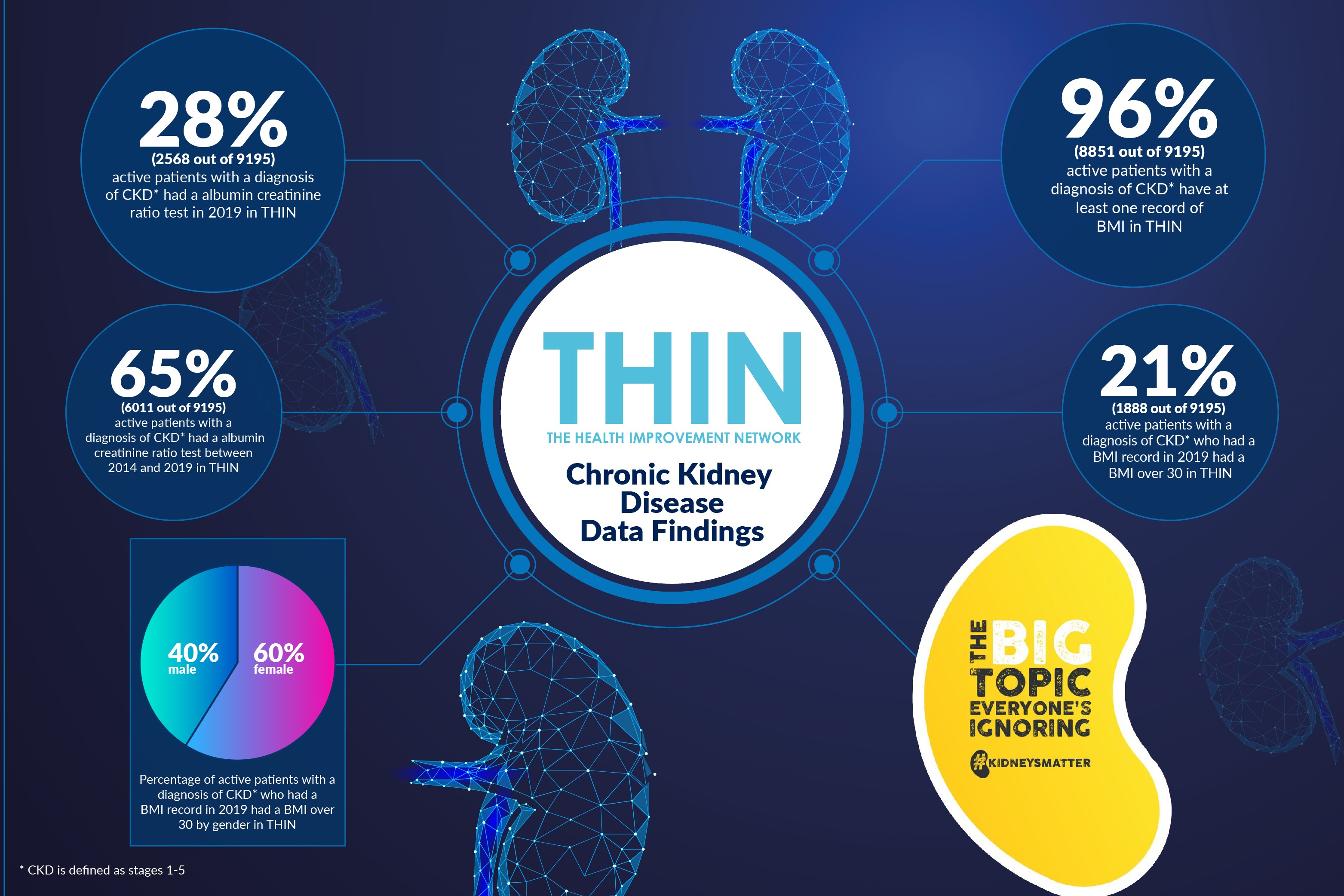
- Coronary Heart Disease
CKD also has far reaching effects on the rest of the body, particularly the heart. Coronary heart disease can lead to CKD, but kidney disease can also cause heart disease, with heart disease being the most common cause of death among people on dialysis. Analysis of THIN data revealed 24% of active patients with a diagnosis of CKD and Coronary Heart Disease.
- Hypertension
Two thirds (67%) of active patients with a diagnosis of CKD in THIN also have hypertension, a major risk factor for cardiovascular and renal disease. Conversely, chronic kidney disease (CKD) is the most common form of secondary hypertension and mounting evidence suggests it is an independent risk factor for cardiovascular morbidity and mortality.
This is where THIN can be so powerful in joining up the dots. Our data provides a clear representation of community and population health which, when combined with proactive strategies for improving population health, can deliver more effective models of care for patients. Improving awareness through World Kidney Day is invaluable, but better diagnosis and improvements in medication are clearly essential.
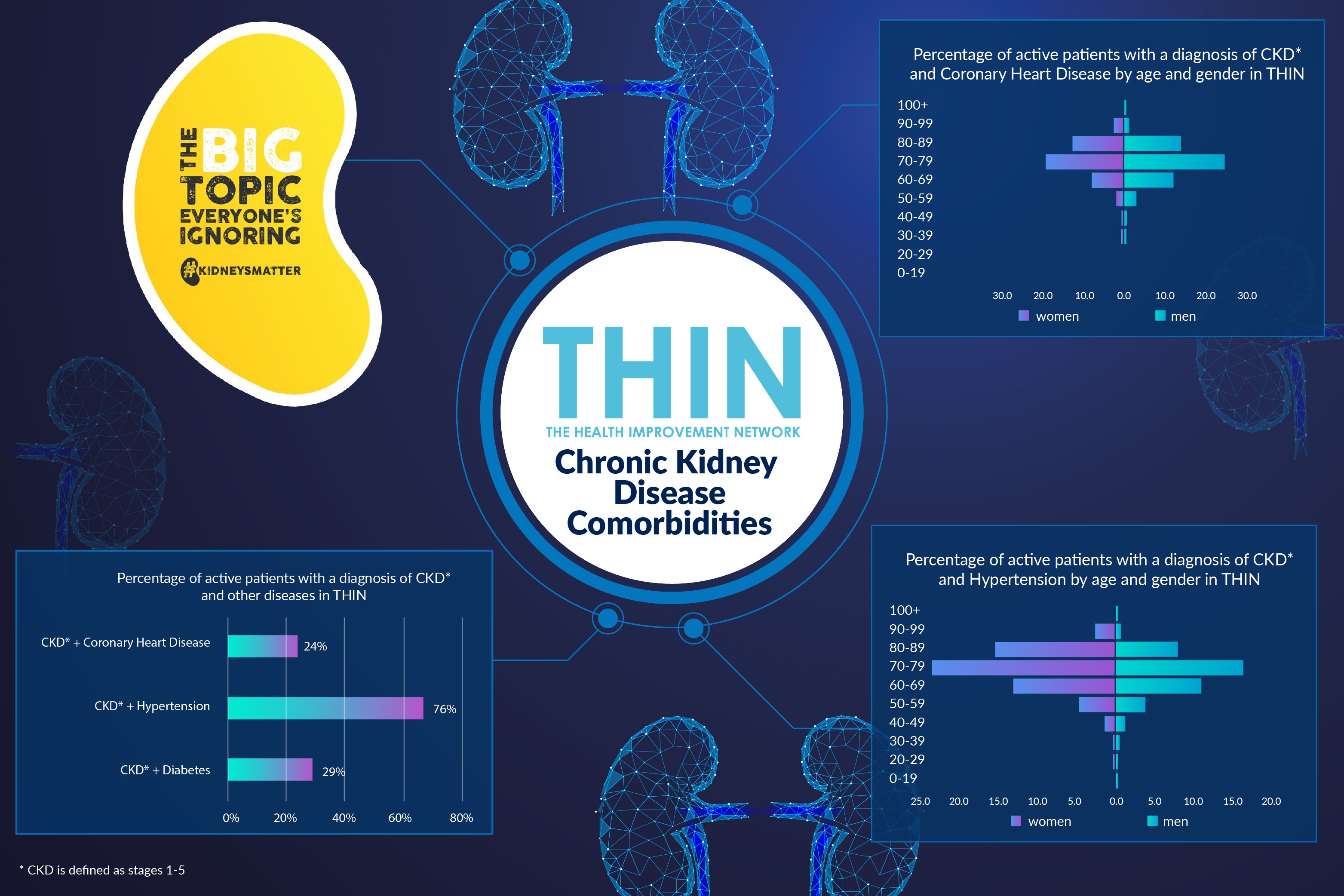
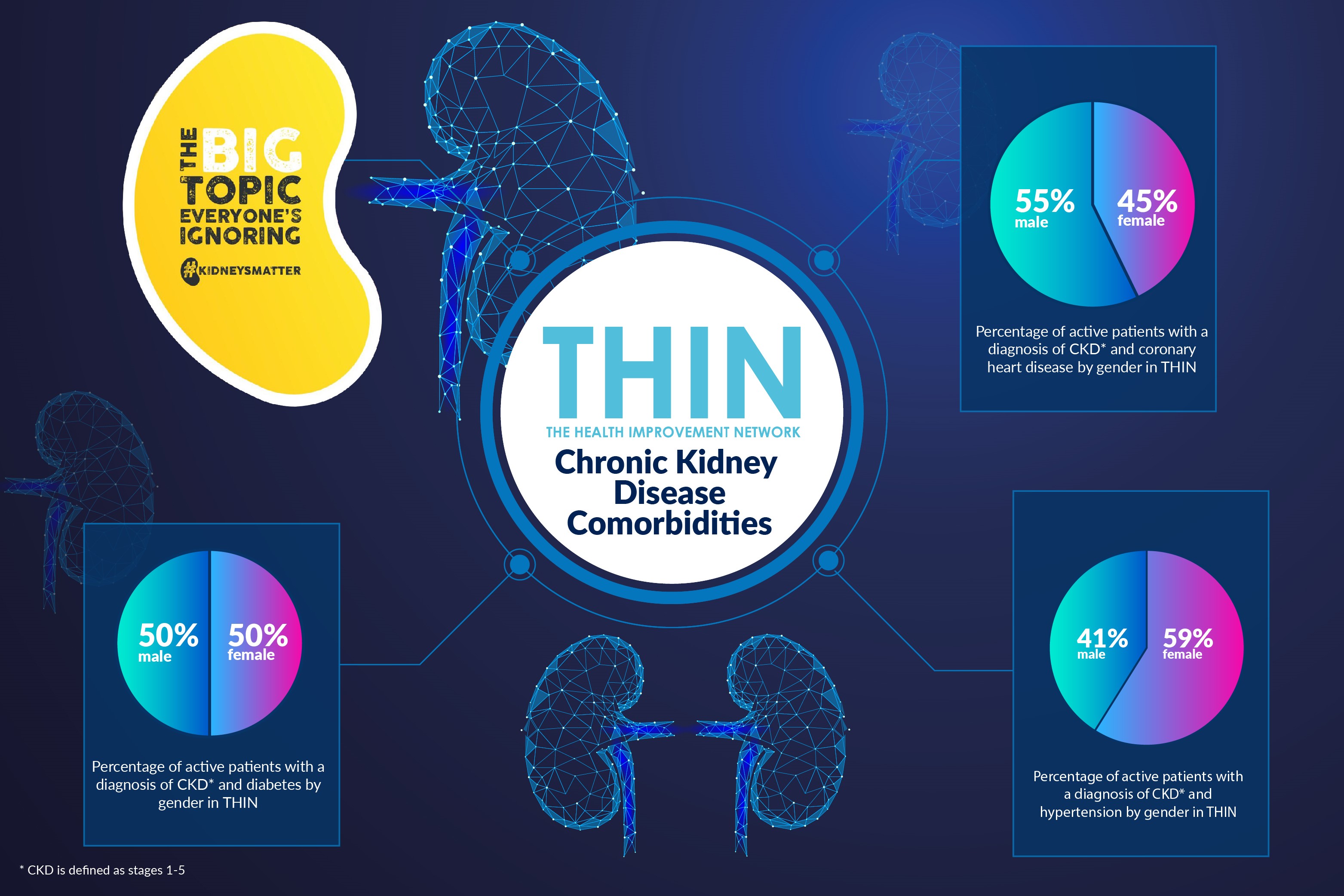
Population Health
Improving population health requires three steps: find a cohort of patients who may be at risk of a particular disease burden; apply an intervention to these patients; and finally analyse the outcomes to see if there has been any impact, positive or negative. At Greenwich CCG, the use of Outcomes Manager from Vision enabled the rapid identification of an additional 4,000 patients with long term conditions, including diabetes.
This ability to formulate an algorithm within Outcomes Manager to find patients with these specific risk factors and identify priority patients – such as those who should receive a kidney function test – is key to addressing the huge swathe of undiagnosed patients with CKD. The proven benefits of early identification and intervention within specific patient groups has reinforced the value of improving population health, gaining better understanding of health trends and making better use of resources.
About THIN
THIN is an unobtrusive medical data collection scheme that contains anonymised longitudinal patient records for approximately 6% of the UK population. It is the key driving force behind enabling advancements in patient care and outcomes, with one of the most respected and reliable data sources for anonymised primary care records.
